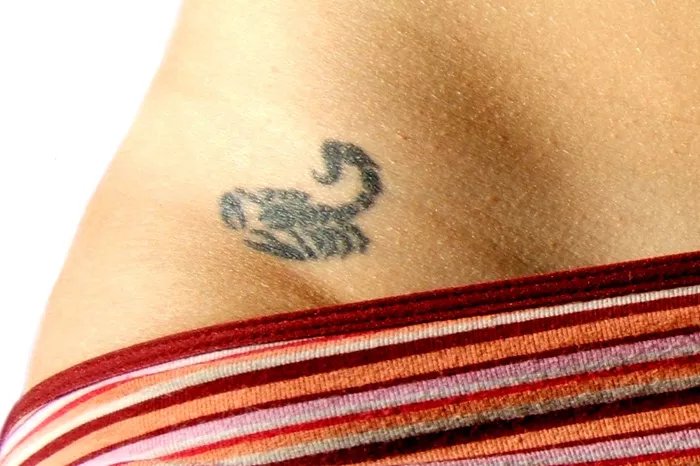Tattoos have become an increasingly popular form of self-expression and body art, transcending gender and cultural boundaries. Among the various tattoo placements, hip tattoos have gained significant prominence, particularly among men. This article delves into the captivating realm of hip tattoos for guys, exploring their rich symbolism, diverse meanings, and endless styling possibilities.
Symbolism and Meaning of Hip Tattoos
The hip holds a profound significance in human anatomy, representing strength, stability, and mobility. Tattoos adorned on the hip often carry symbolic meanings associated with these physical attributes.
Strength and Power: The hip muscles play a crucial role in locomotion, providing support and strength to the entire body. Hence, hip tattoos can symbolize physical strength, resilience, and the ability to overcome challenges.
Balance and Stability: The hips serve as a source of balance and stability, allowing us to maintain an upright posture and navigate our surroundings. Tattoos on the hip can convey a sense of inner equilibrium, groundedness, and a stable foundation in life.
Mobility and Adaptability: The hip joint is highly flexible, granting us the ability to move, pivot, and adjust. Hip tattoos can represent adaptability, flexibility, and the willingness to embrace new experiences with an open mind.
Sexuality and Desire: The hip region is closely associated with sensuality and sexual desire. Tattoos on the hip can symbolize attraction, passion, and a playful or provocative nature.
Stylistic Variations and Placement
Hip tattoos offer a vast canvas for artistic expression, allowing for limitless variations in design and style.
Traditional Tattoos: Traditional American and Japanese tattoo styles are popular choices for hip tattoos. These tattoos often feature bold lines, vibrant colors, and iconic imagery, such as skulls, dragons, or geishas.
Realistic Tattoos: Realistic tattoos replicate photographic images with meticulous detail and depth. Hip tattoos in this style can showcase intricate portraits, landscapes, or scenes from nature.
Tribal Tattoos: Tribal tattoos draw inspiration from ancient cultural symbols and patterns. They typically feature geometric designs, bold lines, and earthy tones.
Geometric Tattoos: Geometric tattoos employ simple and abstract shapes to create visually striking patterns. These tattoos often reflect modern aesthetics and are characterized by clean lines and minimalist design.
Watercolor Tattoos: Watercolor tattoos mimic the ethereal and flowing nature of watercolor paintings. They feature soft gradients, vibrant hues, and a subtle, artistic flair.
The placement of hip tattoos can also convey different meanings.
Lower Hip: Tattoos placed on the lower hip, closer to the groin, may emphasize sensuality and desire.
Upper Hip: Tattoos on the upper hip, closer to the waist, can symbolize strength, stability, and a sense of power.
Side Hip: Tattoos located on the side of the hip, where the thighbone meets the pelvic bone, offer a versatile placement that can accommodate various tattoo sizes and styles.
Choosing the Right Hip Tattoo
Selecting the ideal hip tattoo requires careful consideration of personal meaning, desired symbolism, and artistic style.
Meaning and Symbolism: Reflect upon the symbolism and significance associated with hip tattoos. Choose a design that resonates with your beliefs, values, or aspirations.
Artistic Style: Explore different tattoo styles and select the one that best complements your personality and the message you wish to convey.
Size and Placement: Determine the appropriate size and placement of the tattoo based on your preferences and the desired impact. Consider the visibility and exposure you desire.
Consultation with a Tattoo Artist: Seek the guidance of a reputable and experienced tattoo artist. They can provide professional advice, help you refine your concept, and ensure precise execution of your tattoo.
Aftercare and Maintenance
Proper aftercare is essential to ensure the longevity and health of your hip tattoo.
Cleanliness: Keep the tattoo area clean by washing it gently with antibacterial soap and water. Apply a fragrance-free lotion to keep the skin hydrated.
Protection: Avoid exposing the tattoo to direct sunlight or harsh chemicals. Cover it with loose-fitting clothing or bandages when necessary.
Avoid Scratching: Resist the urge to scratch or pick at the tattoo, as this can damage the healing skin and distort the design.
Consultation with a Medical Professional: If you experience any unusual symptoms, such as excessive redness, swelling, or discharge, consult a healthcare professional promptly.
Conclusion
Hip tattoos for guys offer a potent blend of symbolism, style, and self-expression. They can embody strength, balance, adaptability, sensuality, and a myriad of personal meanings. By carefully considering the symbolism, artistic style, and placement, you can create a tattoo that is uniquely yours, a permanent testament to your journey and beliefs. Remember to prioritize proper aftercare to preserve the beauty and integrity of your hip tattoo throughout the years. Embrace the captivating world of hip tattoos and let your body art tell a story that reflects your essence.
FAQS
Do hip tattoos fade quickly?
Hip tattoos are generally less likely to fade quickly than tattoos in other areas of the body, such as the hands or feet. This is because the skin on the hip is thicker and less exposed to the sun and other environmental factors that can cause tattoos to fade. However, all tattoos will fade over time, and hip tattoos may fade more quickly than tattoos in other areas of the body if they are not properly cared for.
Do hip tattoos hurt?
The level of pain when getting a hip tattoo varies from person to person, but it is generally considered to be one of the less painful areas to get inked. The skin on the hip is relatively thick and there are fewer nerve endings in this area, which means that the pain is not as intense as it can be in other areas of the body. However, it is important to keep in mind that everyone’s pain tolerance is different, so what may be painful for one person may not be as painful for another.

